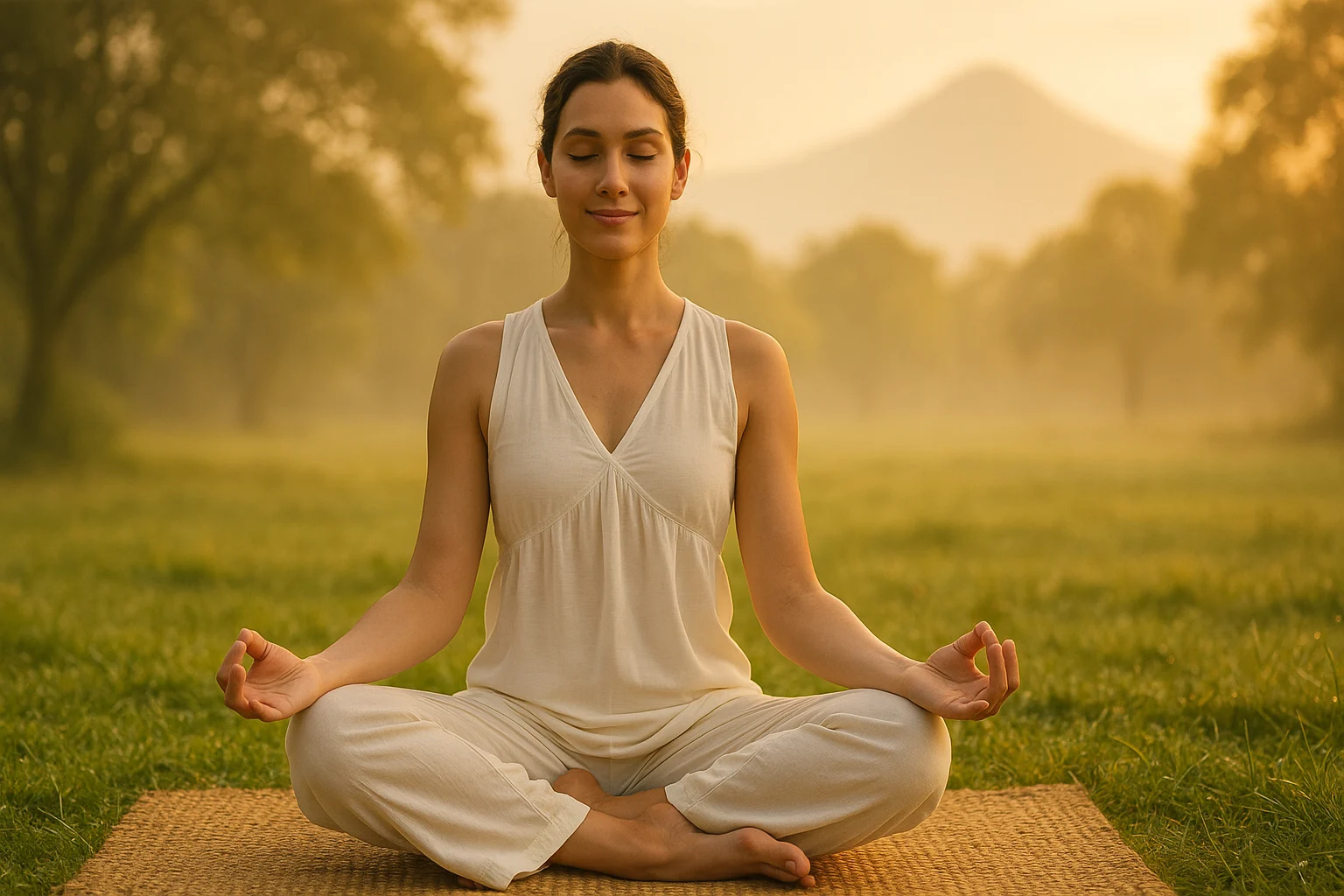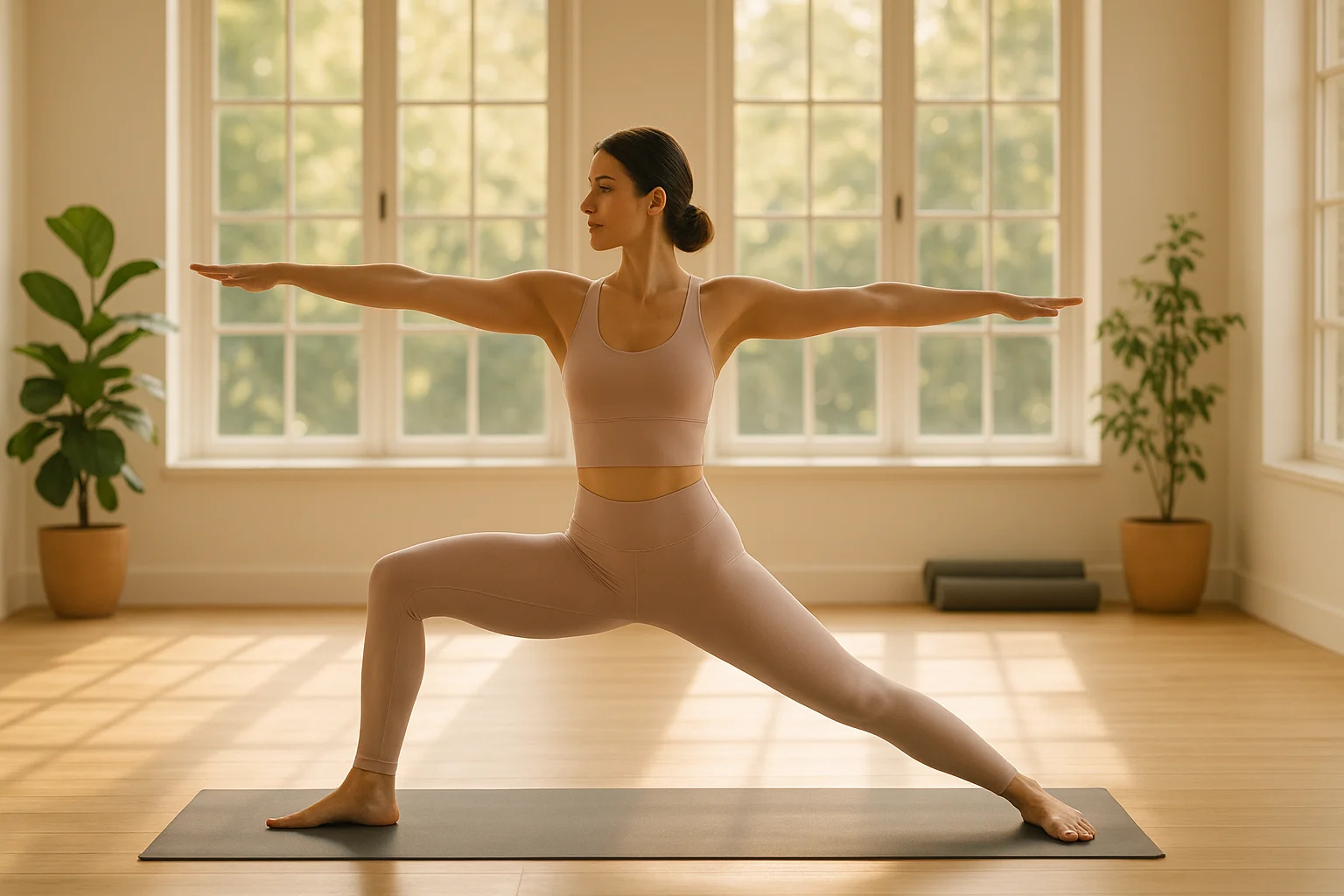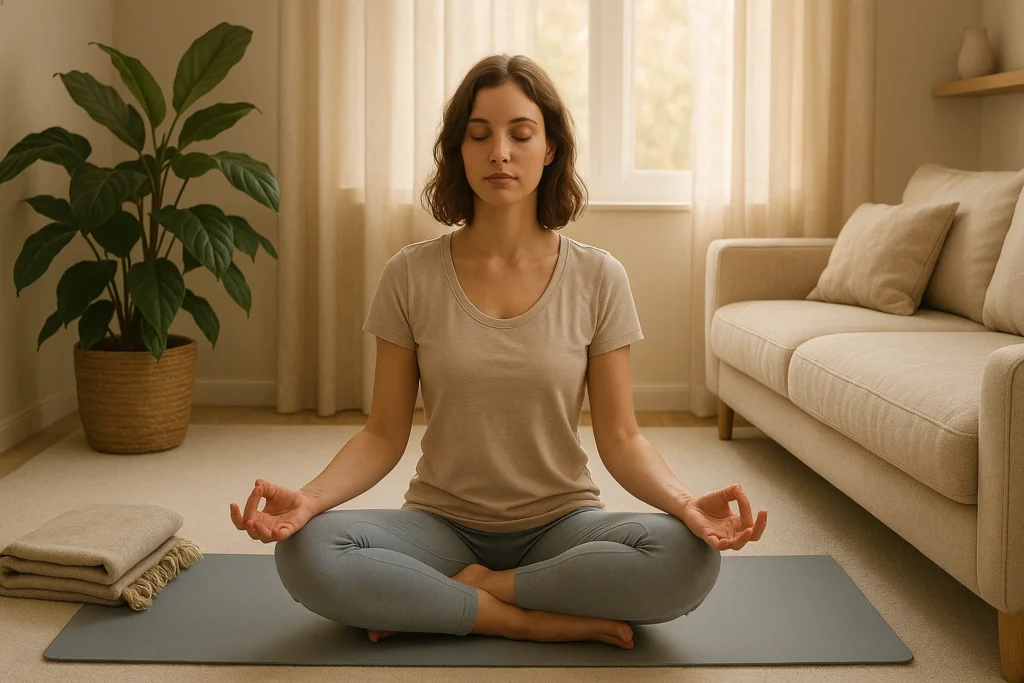
Ever feel like life’s yanking you in a million directions by the end of the day? I get it, and you’re not alone. The yoga 8 limbs aren’t just about nailing poses—they’re like a trusty roadmap to finding some inner peace. Picture a tree: the poses are the bright, fluttery leaves, but the real strength lies in the roots—things like ethics, breathing, and meditation. A lot of folks miss this deeper stuff that can turn chaos into calm. Want to dig into the bigger world of yoga philosophy? Check out our complete yoga philosophy guide — your full roadmap to how the eightfold path weaves into a life full of balance and meaning.
Explore the 8 Limbs Now!Table of Contents
The Roots of the Yoga 8 Limbs
Before we jump into the eightfold path, let’s talk about where it all began. Over 2,000 years ago, Patanjali, a wise sage, wrote the Yoga Sutras—think of them as the heart of yoga philosophy, often called the yoga philosophy limbs. I love how Patanjali’s eight limbs shows us a way to find calm amidst life’s storms.
“Yoga” means “union,” connecting mind, body, and spirit. This path of yoga, often called Ashtanga (“Ashta” = eight, “Anga” = limb), quiets mental chatter. Think of it as a ladder: each limb builds toward a balanced life.

This post has affiliate links. We may earn a commission. Learn more.
Track Sleep & Stress, At Home
Bring svādhyāya to life with a simple at-home kit. See what’s happening, then fine-tune your breath, bedtime, and meditation routine with clarity.
Get your at-home kit Partnered
Use code Max15 for 15% off sitewide.
Not medical advice; consult a healthcare professional for personal guidance.
Exploring the Yoga 8 Limbs: A Step-by-Step Guide — eight limbs yoga explained
Ready to get into the nitty-gritty of the eightfold path? These tools aren’t just ancient wisdom—they can totally shake up your daily life in the best way. Let’s dive in!
1. Yama: Your Ethical Compass
Yamas are like your moral compass for dealing with the world—they help you build stronger, kinder connections. Let’s break down the five Yamas:
- Ahimsa (Non-violence): It’s more than not hurting anyone; it’s about spreading kindness with every word and thought, even toward yourself or the planet.
- Try This Now: Stuck in traffic? Take a slow breath instead of cursing. Feel the tension slip away as you choose calm.
- Pull Quote: “Ahimsa is like planting seeds of love in everything you do.”
- Satya (Truthfulness): Be honest, but soften it with kindness. It’s how you earn trust.
- Try This Now: Own up to a small work mistake with a smile. You’ll feel lighter, I promise.
- Asteya (Non-stealing): Respect others’ time, ideas, even energy. Don’t take what isn’t yours.
- Try This Now: Shout out a coworker’s idea in a meeting. Watch how it builds a vibe of trust.
- Brahmacharya (Moderation): Save your energy for what matters, like saying no to endless scrolling.
- Try This Now: Cut social media to 30 minutes today. Feel the mental space open up.
- Aparigraha (Non-greed): Let go of wanting more. It’s about loving what you’ve got.
- Try This Now: Donate a bag of clothes you don’t wear. That lightness? That’s freedom.
In Modern Life: Sarah, a marketing exec, used to leave meetings frazzled, her shoulders practically at her ears. Then she started practicing Ahimsa, choosing gentler words even when stressed. Now, she notices her team loosening up—smiles all around, and it feels like a mini victory every time.
2. Niyama: Self-Discipline for Growth
Niyamas are like a warm hug for your soul—they’re all about growing from within. Here’s a look at the five practices that keep your inner world thriving:
- Saucha (Purity): Clear out the clutter, both in your space and your mind. Negative thoughts? Let ’em go.
- Try This Now: Tidy your desk for five minutes. Feel your brain breathe easier with every cleared inch.
- Santosha (Contentment): Find joy right where you are, not chasing “someday.”
- Try This Now: Jot down three things you’re grateful for. Let that cozy feeling settle in.
- Pull Quote: “Santosha is like hitting pause on worry and just soaking in the now.”
- Tapas (Discipline): Light that inner fire with small, steady efforts. It’s the good kind of burn.
- Try This Now: Commit to five minutes of stretching daily. Feel your body hum with purpose.
- Svadhyaya (Self-study): Get curious about yourself. Journaling’s like a chat with your wiser side.
- Try This Now: Write down one thing you learned about yourself today. It’s like uncovering a little treasure.
- Ishvara Pranidhana (Surrender): Trust life’s flow and let go of control. It’s freeing.
- Try This Now: Feeling stressed? Whisper, “I’ve done my best,” and feel the weight lift.
In Modern Life: Priya, a college student, used to stress so much over exams that she’d barely sleep. Then she tried Santosha, scribbling down small things she’s thankful for each day—like a good coffee or a sunny walk. Now, even during finals, she feels lighter, like she’s carrying less baggage.
3. Asana: Physical Postures for Strength
Asana gets your body ready for meditation—it’s about finding a steady, comfy pose, not just looking Instagram-perfect. Yoga Sutra II.46 calls it “steady and comfortable.” I love pairing it with mindful movement yoga to feel truly present.
In Modern Life: I sneak in 15-minute yoga flows to melt away tension after a long day. It’s less about perfect poses and more about syncing breath with movement. Asana builds strength and keeps you grounded.
Try This Now: Hold downward dog for 30 seconds. Feel your breath flow and your feet root into the earth.
4. Pranayama: Breath as Life Force
Pranayama is all about harnessing your breath to balance your energy. “Prana” means life force, and “Ayama” is control—it’s like a reset button for your mind. Check out more in our yoga and breathwork for stress relief guide.
In Modern Life: I rely on deep belly breathing before big meetings—it’s like flipping a switch from frazzled to focused. Try these:
- Dirga Pranayama: Fill your belly, ribs, then chest with air.
- Nadi Shodhana: Alternate nostril breathing to calm your nerves.
- Kapalabhati: Sharp, quick exhales to fire you up.
- Ujjayi Breath: Ocean-like breath to stay focused.
Try This Now: Inhale for 4, exhale for 6. Feel your shoulders drop as the stress melts away.
5. Pratyahara: Tuning Out Distractions
Pratyahara is like hitting mute on the world’s noise—tuning out distractions to focus inward. In our phone-obsessed world, it’s a game-changer. I’ve found it helps me stay present.
In Modern Life: Try eating a meal without your phone, savoring every bite. A quick 5-minute digital detox feels like a mini-vacation.
Try This Now: Close your eyes for a minute and focus on your breath. Let the outside world fade away.

6. Dharana: Mastering Concentration — ashtanga yoga principles
Dharana is about training your mind to lock onto one thing—like a mantra, your breath, or even a candle flame. It’s a productivity booster and pairs great with mindfulness techniques for focus.
In Modern Life: Try working on one task without checking your phone. In yoga, fix your gaze on a spot during a balance pose—it sharpens your focus like nothing else.
Try This Now: Count 10 breaths, staying with each one. Feel your mind get clearer with every number.
7. Dhyana: The Art of Meditation
Dhyana is meditation that flows effortlessly from Dharana—think of it as sinking into a quiet, peaceful zone. Yoga Sutra III.2 calls it uninterrupted focus. A comfy meditation cushion under $50 makes it even better.
In Modern Life: I carve out 5 minutes to focus on the word “peace.” It’s like a mental reset. Try watching your thoughts without getting caught up in them.
Try This Now: Meditate for 2 minutes, feeling your breath’s rhythm. Let calm wash over you like a gentle wave.
8. Samadhi: Embracing Bliss
Samadhi is that rare, magical moment when you feel totally connected to everything—like you’re part of something bigger (Yoga Sutra I.41). It’s the ultimate goal of the eight limbs of yoga, and I’ve caught glimpses of it staring at a sunset.
In Modern Life: You might feel Samadhi watching a sunset or getting lost in a creative project. Those moments when time vanishes? That’s the spark of it.
Try This Now: Spend 5 minutes in nature, soaking it all in. Feel the world hush as you connect.
Weaving the 8 Limbs into Your Life
Why bother with the eightfold path in today’s crazy world? Because it’s like a Swiss Army knife for life’s messiness—helping you tackle anxiety, connect better with others, and find a bit of calm. Picture Priya, a student, slowing her racing heart with Pranayama before a big exam. Or James, a busy dad, turning off his phone notifications to savor family dinners with Pratyahara. Start small—maybe try Santosha with a gratitude journal this week. You’ll notice the difference, trust me.
Why All 8 Limbs Matter: A Holistic Path
The eightfold path is like a puzzle—each piece fits together, much like the broader yoga philosophy limbs described in the Yoga Sutras. Doing Asana without Ahimsa might lead to pushing too hard and getting hurt. Meditating without Pratyahara? Good luck with all those distractions. B.K.S. Iyengar says every limb supports the others.
Explore a Yoga Limb
Curious about a specific limb? Click a button below to see what it’s about, why it matters, and a quick way to try it.
Frequently Asked Questions
Wind Down with Sleep-Friendly Gummies
Pair your evening Pranayama or yoga nidra with a gentle, sleep-focused gummy that may support your wind-down routine.
Explore sleep gummies Partnered
No discount code needed — just click and explore.
Not medical advice; consult a healthcare professional for personal guidance.
Conclusion: Your Path with the Yoga 8 Limbs
Next time life feels like a whirlwind, try this: take a slow, deep breath or flash a kind smile to a stranger. These little moments, grounded in the yoga 8 limbs, have turned my chaotic days into something calmer and brighter. I’m rooting for you—give it a gentle try.
This content is for informational purposes only and not a substitute for professional medical advice. Consult a healthcare provider before starting any yoga practice, especially if you have health conditions.


